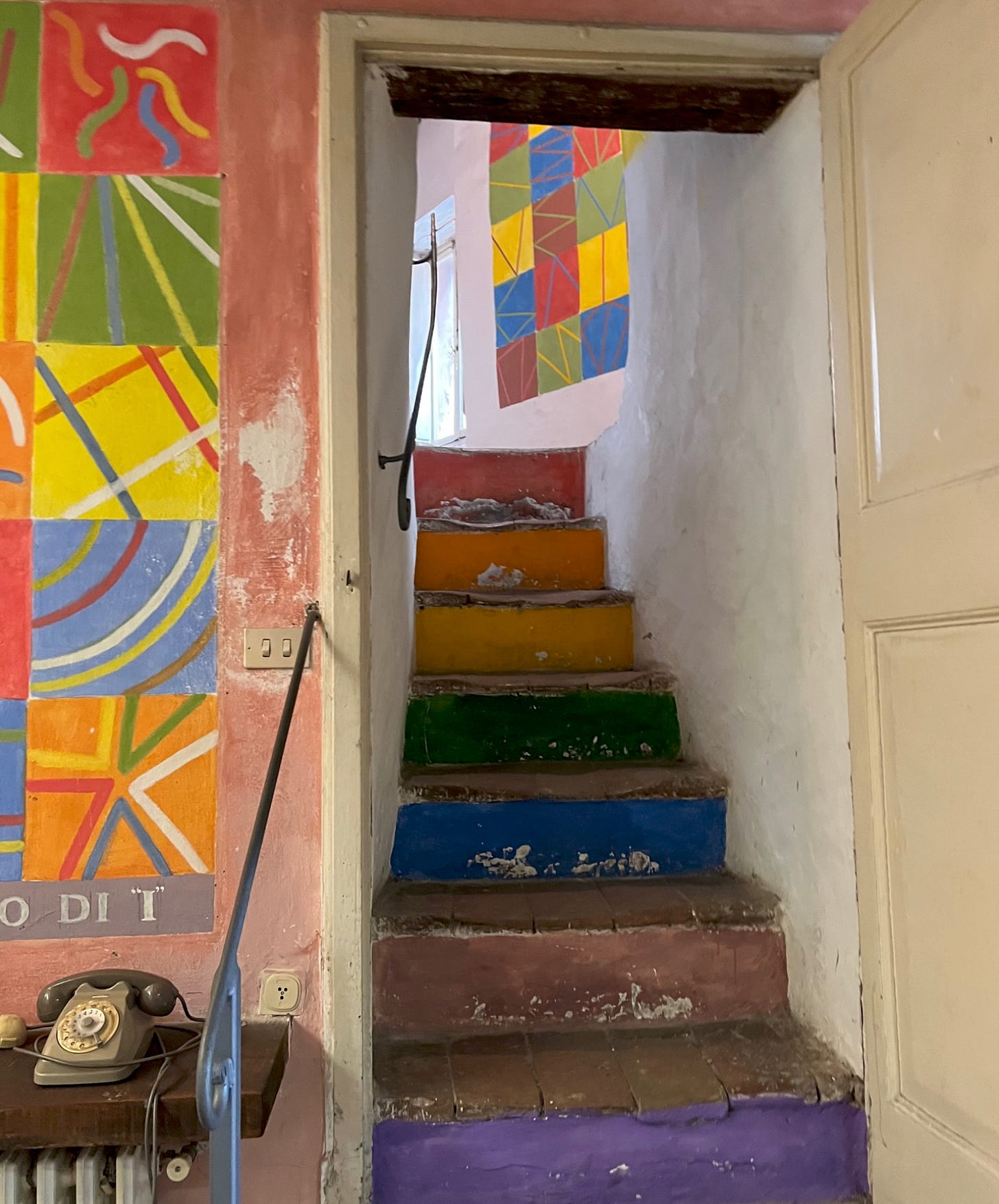What do I know about Umbria? It starts and ends with My House in Umbria. I haven’t read the novella and my only explanation of why I’ve seen the film is that it came out in 2003. My year of renting films. (My parents, after raising us without television, surprised us with a TV set—without cable—and a VHS player.)
On the rewatch, I was amused to find that Maggie Smith’s character lives in Italy and cannot speak Italian. And that she’s a “romantic fiction” author who casually pushes her own books on houseguests (glorious!). It brought into my lexicon the word “novelette.” Better than novella!
Am I recommending it? Well, not really, unless you enjoy PBS-style movies. But maybe you will enjoy Joe Lloyd’s write-up of his trip to Umbria! (You may remember Joe from his episode of Two Englishmen Talking, a show dedicated to showcasing my husband’s friends. There’s no way to measure engagement on videos. I pretend the views are in the thousands.)
Joe Lloyd’s Trip to Umbria!
Rome is a nightmare in summer. The streets throng with families of dazed tourists. The walls emanate scorching heat long after the sun has gone down. If you must touchdown in the Eternal City in the summer, make like a local and escape.
There is no better place to go than Umbria, a landlocked region in the very centre of Italy. Umbria is less than an hour’s drive from Rome. But it feels like another world. Although bits of infrastructure intrude—the vast Corbara Dam near Orvieto could be the setting for a Cold War thriller—you might be forgiven for thinking you had left the modern world behind. Umbria is a region of seemingly never-ending green hills, spotted with every possible type of ancient hill town. Some like Amelia squat on top of mountains. Others such as Trevi spill across their sides. And then there are those like Perugia which feel hidden in the clouds. Although many of these towns are small and pastoral, they are sophisticated and often full of life. Many come alive after dark.
The hills themselves are straight out of a Renaissance altarpiece, possibly because local heroes like Perugino and Pinturicchio could not resist setting their Crucifixions against the verdant Umbrian landscape. And the towns seem the stuff of fantasy. Chronicles of Narnia writer C.S. Lewis even named his books after the hill town of Narni—although he might just have liked the name.
Places to Visit
Orvieto: Perched atop a huge cliff, this is a stony, almost rugged city. The Cathedral is the main attraction, a hulking edifice in black and white stone, which houses some very eccentric frescos by the Renaissance master Luca Signorelli. Stranger still is the Pozzo di San Patrizio, a 54m deep well built for emergencies.





